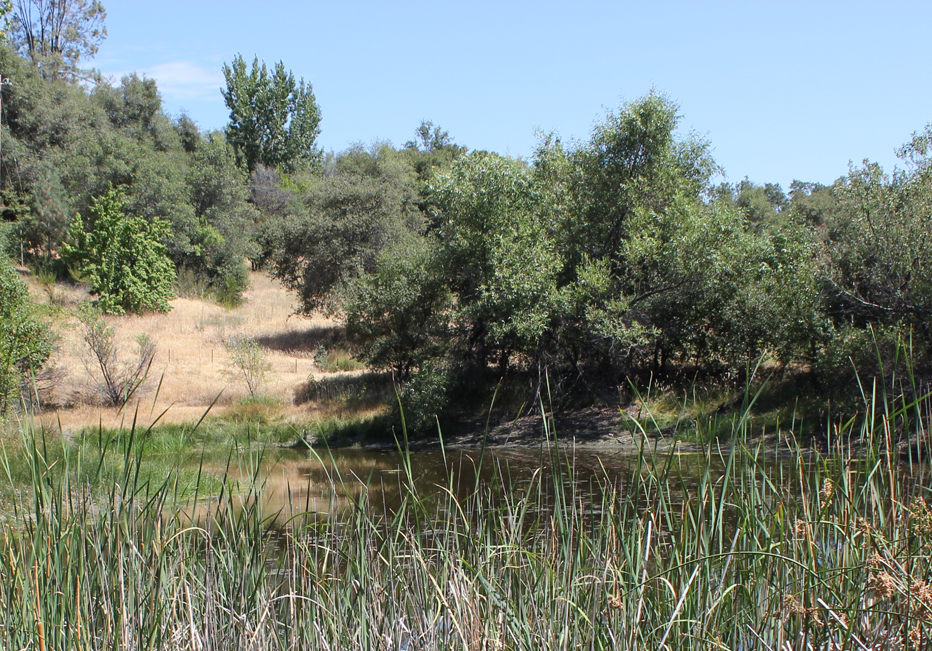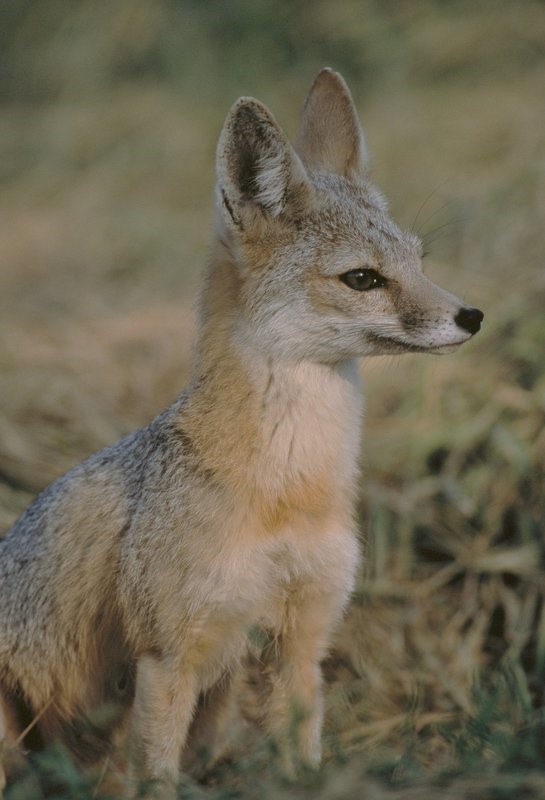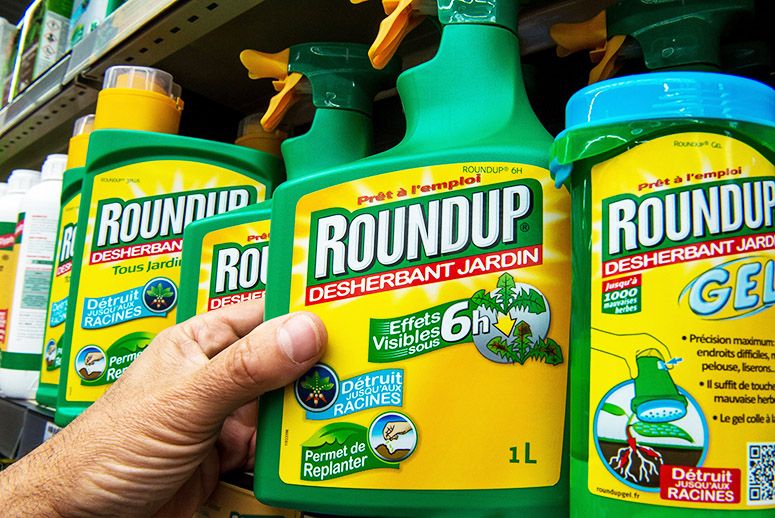20
Dec
USDA Sits on Organic Board Recommendation to Eliminate Unintended Incentive to Convert Native Ecosystems to Organic Production

(Beyond Pesticides, December 20, 2019)Â Organic advocates are raising the alarm on what may be an unintended consequence of a provision in the National Organic Standards (NOS), the rules that govern certified organic agricultural production. The concern is that one National Organic Program (NOP) requirement for organic certification â a three-year waiting period during which land must be free of disallowed substances â is actually incentivizing the conversion of critical ecosystems, and fueling deforestation and biodiversity loss.
Conversions of native landscapes to working organic land to date include losses of: a California forest, Colorado prairies, a New Mexico wetland, and native sagebrush lands in Washington and Oregon. The Wild Farm Alliance has pointed out that, âThese areas, that were once delivering critical ecosystem services and providing essential habitat for wildlife, are no longer performing the same functions and [it] would take hundreds of years to reverse the damage.â
No doubt this development was neither the intention of the NOP rule, nor an anticipated byproduct. But as Civil Eats notes, âUSDA [U.S. Department of Agriculture] organic regulations mandate that farmers must âmaintain or improve the natural resourcesâ on their farms, but there is no written requirement that addresses the natural resources that existed before the farm was established. . . . In some places, that three-year transition â in which the farm often has greater costs and sees a drop in yields â has essentially created an unwritten economic incentive to clear untouched ecosystems. In other words, if land that has never been farmed can be certified right away, itâs more profitable to farm that than to wait three years.â Such important native ecosystems will likely need the publicâs help to protect them from such conversions.
The National Organic Standards Board (NOSB) was created by Congress via the 1990 Organic Foods Production Act (OFPA). The NOSB is a panel of 15 stakeholder members â from agricultural, environmental advocacy, organic certification, organic retail, food processing, and environmental science sectors â who operate in an advisory capacity to the USDAâS NOP. The NOSB is expected to make recommendations to the Secretary of Agriculture on a wide range of issues involving the production, handling, and processing of organic products; it also has some responsibilities related to the National List of Allowed and Prohibited Substances in organic agriculture.
OFPA, as noted in the revised NOSB recommendation, âInclude[s] a clear bias towards protection of the natural resources present on an organic operation, including the physical, hydrological, and biological features of the farm. The soil, water, wetlands, woodlands, and wildlife must be maintained or improved by the organic operator through production practices implemented in accordance with the Act and Regulations. This bias towards ecosystem preservation is also found within the organic marketplace with consumer expectations that organic farms and ranches will be examples of excellent land stewardship.â Conversion of native ecosystems, via the âloopholeâ incentive of the NOP âthree yearâ rule, clearly counters the intent of the organic label.
The NOSB has paid attention to this issue since 2009, and has worked to remedy the three-year loophole, particularly in the past few years, after the Wild Farm Alliance began advocating for the NOSB to be more muscular on the problem. The Wild Farm Alliance advocated for a rule that would not limit the growth of organic agriculture, but that would, instead, redirect growth to the transition of conventionally, chemically managed land. The alliance also maintained that it is unfair to organic producers who have waited three years to transition land to have to compete with those farmers who convert native ecosystems overnight.
Ultimately, the board proposed a revision stipulating that if any land that included native ecosystems were cleared for agricultural production, that land would be ineligible for organic certification for a 10-year period â a much longer wait than the current three years. The aim was to disincentivize the practice of native ecosystem land conversion.
Many public comments and nonprofit advocates supported the recommendation on the principle that organic production practices ought not destroy native ecosystems. However, some organic farmers, as well as the Organic Trade Association and Stonyfield Organic, a large organic food producer, were concerned that this would inappropriately impact some organic producers â especially in the Northeast U.S. In that region, organic farms tend to be small-to-medium-sized operations, some of which encompass forested lands that were once in production, but which have grown back. (In fact, according to a history of New England agriculture and economy, approximately 90% of New England in the mid-19th century was cleared and in agricultural production; a century and a half later, much of that land had been returned to a wooded state.)
Britt Lundgren of Stonyfield said, at the Spring 2018 NOSB meeting, âThese farmers are not choosing to log land because the conversion period is faster; itâs the only land that is available for them to expand onto. The primary threat to the health of native ecosystems in the Northeast is not agriculture. Itâs development. . . . If organic agriculture is going to remain a viable business in the Northeast in the face of immense development pressure, organic farms need to be able to expand in the most efficient way.â
Beyond Pesticides made comments in March of 2018 on the proposal, including: âDespite efforts of organic farmers to build and protect biodiversity, it is unlikely that the organic farm will achieve the same level of biodiversity and ecological resilience as the original ecosystem. On the other hand, the conversion of conventional, chemical-intensive agriculture to organic agriculture provides huge benefits to biodiversity through both the absence of toxic inputs and positive measures to increase biodiversity in soil-based systems that are required by OFPA or its regulations. Therefore, Beyond Pesticides supports efforts by the NOSB to eliminate incentives to convert high-value native land to organic production, as well as to increase incentives to convert chemical-intensive farmland to organic production.â
It also supported the 10-year period, and recommended, re: greater specificity about native ecosystems, this definition: âNative ecosystems can be recognized in the field as retaining both dominant and characteristic plant species as described by established classifications of natural and semi-natural vegetation. These will tend to be on lands that have not been previously cultivated, cleared, drained, or otherwise irrevocably altered. However, they could include areas that had been substantially altered over 50â100 years ago, but have since recovered expected plant species composition and structure.â
The NOSB then responded to the variety of feedback it received by updating the proposed ruleâs language to define ânative ecosystemsâ more specifically; the board believes this will mean the 10-year waiting period would not apply to farmers in such situations who are looking to expand their productive acreage. In May 2018, the NOSB approved (nearly unanimously) the revised, formal liminating the Incentive to Convert Native Ecosystems to Organic Production recommendation. The Wild Farm Alliance supported this revision, as it wrote in its issue brief on the matter.
Typically, once the NOSB has made a recommendation, the NOP puts it on the rulemaking agenda, develops a rule proposal on the basis of the recommendation, solicit public comment, and then develop a final rule. Yet the NOP has taken no action to bring the recommendation into its rulemaking process. This is unfortunately not surprising in the era of the Trump administration, which has been marked by broad efforts to reduce, stall, and sometimes ignore regulation in and across agencies. The USDA is no different in this regard â particularly with Sonny Perdue at the helm of USDA. (He has been criticized by scientists, environmental and health advocates, and small farmers for being anti-science and being far too cozy with industrial interests.)
As noted, public pressure on the USDA may help push NOP to âdo its dutyâ and bring the NOSB recommendation forward to the rulemaking agenda. This is a critical step in protecting at-risk, and nearly irretrievable, native ecosystems. Stay current with advocacy and action on issues in organics through Beyond Pesticides coverage of organics and keeping organic strong.
All unattributed positions and opinions in this piece are those of Beyond Pesticides.
Source: https://civileats.com/2019/12/16/does-a-loophole-in-organic-standards-encourage-deforestation/









 (Beyond Pesticides, December 19, 2019) Identifying ongoing risk to endangered species, the environmental group
(Beyond Pesticides, December 19, 2019) Identifying ongoing risk to endangered species, the environmental group  (Beyond Pesticides, December 18, 2019) France is making headlines this month in the great, global glyphosate (Roundup) debate. Last week, the French health and safety agency, ANSES (Agence Nationale de sĂ©curitĂ© sanitaire de lâalimentation, de lâenvironment et du travail or the French Agency for Food, Environmental and Occupational Health & Safety), made preliminary decisions within its review of authorizations for the 69 glyphosate (Roundup) weed killer products allowed for sale in the country. ANSES called for immediate withdrawal of authorization for 36 of those products âdue to a lack or absence of scientific data which would allow all genotoxical risk to be ruled out.â The agency also announced it has denied authorization of 4 out of 11 glyphosate-based products submitted for approval since January, 2018.
(Beyond Pesticides, December 18, 2019) France is making headlines this month in the great, global glyphosate (Roundup) debate. Last week, the French health and safety agency, ANSES (Agence Nationale de sĂ©curitĂ© sanitaire de lâalimentation, de lâenvironment et du travail or the French Agency for Food, Environmental and Occupational Health & Safety), made preliminary decisions within its review of authorizations for the 69 glyphosate (Roundup) weed killer products allowed for sale in the country. ANSES called for immediate withdrawal of authorization for 36 of those products âdue to a lack or absence of scientific data which would allow all genotoxical risk to be ruled out.â The agency also announced it has denied authorization of 4 out of 11 glyphosate-based products submitted for approval since January, 2018. (Beyond Pesticides, December 17, 2019) South Asian immigrants to the U.S. may be at increased risk of diabetes due to prior exposure to high levels of DDT,
(Beyond Pesticides, December 17, 2019) South Asian immigrants to the U.S. may be at increased risk of diabetes due to prior exposure to high levels of DDT, 
 (Beyond Pesticides, December 13, 2019) The findings of a
(Beyond Pesticides, December 13, 2019) The findings of a  (Beyond Pesticides, December 11, 2019) Last week, the European Union voted to ban the neurotoxic insecticides chlorpyrifos and chorpyrifos-methyl from use beginning February 1, 2020.
(Beyond Pesticides, December 11, 2019) Last week, the European Union voted to ban the neurotoxic insecticides chlorpyrifos and chorpyrifos-methyl from use beginning February 1, 2020. (Beyond Pesticides, December 10, 2019) Thousands of fox, coyote, and other carnivores will continue to be poisoned to death by hydrogen cyanide after the Trump Administrationâs Environmental Protection Agency (EPA)
(Beyond Pesticides, December 10, 2019) Thousands of fox, coyote, and other carnivores will continue to be poisoned to death by hydrogen cyanide after the Trump Administrationâs Environmental Protection Agency (EPA)  (Beyond Pesticides, December 9, 2019) Although the influence of regulated corporations has historically silenced science that threatens profits â as shown by industry reaction to Rachel Carson’s Silent Spring â attacks on science in federal agencies have increased in the Trump administration.Â
(Beyond Pesticides, December 9, 2019) Although the influence of regulated corporations has historically silenced science that threatens profits â as shown by industry reaction to Rachel Carson’s Silent Spring â attacks on science in federal agencies have increased in the Trump administration.  (Beyond Pesticides, December 6, 2019) A current ban of two pesticides â
(Beyond Pesticides, December 6, 2019) A current ban of two pesticides â  (Beyond Pesticides, December 5, 2019) Five years after three
(Beyond Pesticides, December 5, 2019) Five years after three  (Beyond Pesticides, December 4, 2019) Last week, Thailandâs government shifted course from banning three toxic pesticides to only restricting the use of glyphosate and delaying the enforcement of bans on paraquat and chlorpyrifos. After an initially strong stance, the government is now bending to pressure from the U.S. government and the chemical-intensive farming industry.
(Beyond Pesticides, December 4, 2019) Last week, Thailandâs government shifted course from banning three toxic pesticides to only restricting the use of glyphosate and delaying the enforcement of bans on paraquat and chlorpyrifos. After an initially strong stance, the government is now bending to pressure from the U.S. government and the chemical-intensive farming industry. (Beyond Pesticides, December 3, 2019) Common yard care practices are driven by income, age, geography, and peer-pressure, according to research funded by the
(Beyond Pesticides, December 3, 2019) Common yard care practices are driven by income, age, geography, and peer-pressure, according to research funded by the  (Beyond Pesticides, December 2, 2019)Â December 2 marks the 35th anniversary of the worldâs worst industrial chemical accident. During the night of December 2, 1984, the Union Carbide pesticide manufacturing plant released the highly toxic gas methyl isocyanate (MIC) into the air of Bhopal, India. The reports were horrifying â an estimated
(Beyond Pesticides, December 2, 2019)Â December 2 marks the 35th anniversary of the worldâs worst industrial chemical accident. During the night of December 2, 1984, the Union Carbide pesticide manufacturing plant released the highly toxic gas methyl isocyanate (MIC) into the air of Bhopal, India. The reports were horrifying â an estimated  Raymond Owl, an elder from Sagamok First Nation in Canada is suing the government for aerial spraying of glyphosate. “It’s still our land. We never sold it. We just gave you a right to live here. That’s all you got. But you don’t have authority what you do to our land,” Owl
Raymond Owl, an elder from Sagamok First Nation in Canada is suing the government for aerial spraying of glyphosate. “It’s still our land. We never sold it. We just gave you a right to live here. That’s all you got. But you don’t have authority what you do to our land,” Owl  Xiutezcaht Martinez is a 19-year-old environmental advocate of Aztec descent who got his start in political organizing banning pesticide use on public areas in Boulder, CO. He explained in
Xiutezcaht Martinez is a 19-year-old environmental advocate of Aztec descent who got his start in political organizing banning pesticide use on public areas in Boulder, CO. He explained in  SĂŽnia Guajajara represents over 300 Brazilian Indigenous groups through
SĂŽnia Guajajara represents over 300 Brazilian Indigenous groups through  (Beyond Pesticides, November 26, 2019) Bayerâs Monsanto endangered public health and the environment by knowingly storing and applying the highly hazardous and banned insecticide
(Beyond Pesticides, November 26, 2019) Bayerâs Monsanto endangered public health and the environment by knowingly storing and applying the highly hazardous and banned insecticide  (Beyond Pesticides, November 25, 2019) Continuing its marathon of deregulation to benefit the chemical industry, the Trump administration’s Environmental Protection Agency (EPA) announced
(Beyond Pesticides, November 25, 2019) Continuing its marathon of deregulation to benefit the chemical industry, the Trump administration’s Environmental Protection Agency (EPA) announced  (Beyond Pesticides, November 22, 2019)Â The potential exit of the United Kingdom from the European Union (EU) â aka âBrexitâ â may portend greater pesticide use and exposures, according to a
(Beyond Pesticides, November 22, 2019)Â The potential exit of the United Kingdom from the European Union (EU) â aka âBrexitâ â may portend greater pesticide use and exposures, according to a  (Beyond Pesticides, November 21, 2019) The City of South Miami last month became the first organic community in the state of Florida, passing a
(Beyond Pesticides, November 21, 2019) The City of South Miami last month became the first organic community in the state of Florida, passing a  (Beyond Pesticides, November 20, 2019) Continuing its marathon of deregulation to benefit the chemical industry, the Trump administrationâs Environmental Protection Agency (EPA) released a memo announcing its proposal to increase the amount of the weed killer atrazine allowed in U.S. waterways by 50% during the chemicalâs registration reviewâa stark reversal of previous proposals to significantly reduce atrazine levels in the environment. The proposal comes after agrichemical giant
(Beyond Pesticides, November 20, 2019) Continuing its marathon of deregulation to benefit the chemical industry, the Trump administrationâs Environmental Protection Agency (EPA) released a memo announcing its proposal to increase the amount of the weed killer atrazine allowed in U.S. waterways by 50% during the chemicalâs registration reviewâa stark reversal of previous proposals to significantly reduce atrazine levels in the environment. The proposal comes after agrichemical giant  (Beyond Pesticides, November 19, 2019) Legislatures in two New England states continue to deliberate environmental and public health measures aimed at protecting pollinators, safeguarding schoolchildren, and eliminating toxic pesticides. In Massachusetts, dozens of advocates packed a crowded hearing room for a
(Beyond Pesticides, November 19, 2019) Legislatures in two New England states continue to deliberate environmental and public health measures aimed at protecting pollinators, safeguarding schoolchildren, and eliminating toxic pesticides. In Massachusetts, dozens of advocates packed a crowded hearing room for a  (Beyond Pesticides, November 18, 2019)
(Beyond Pesticides, November 18, 2019) 
